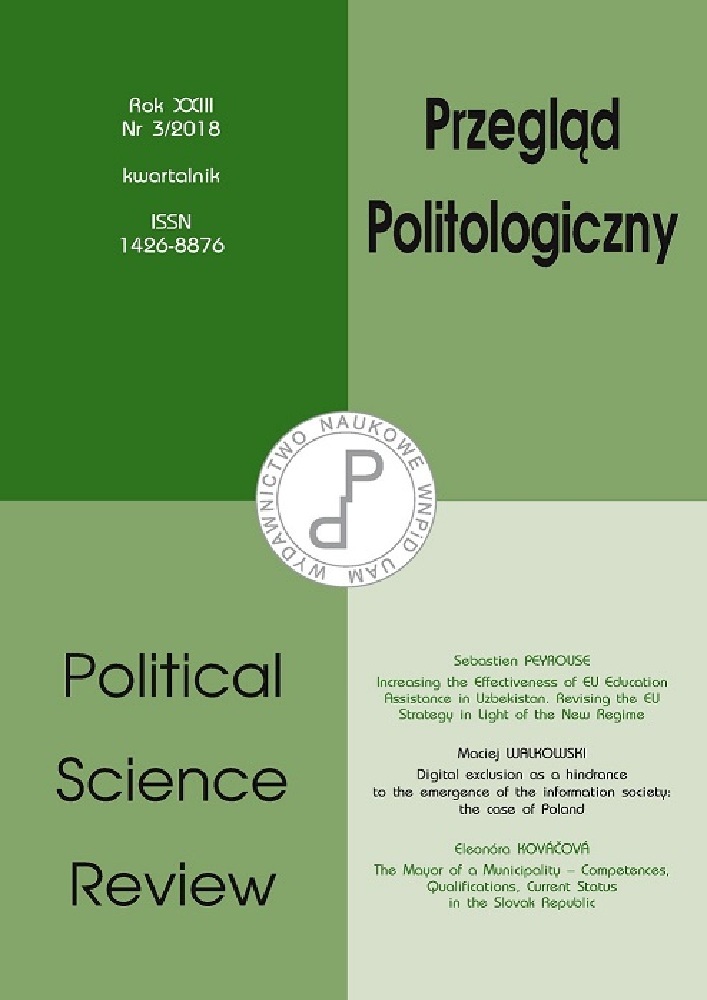Abstrakt
Encouraged by porous border boundaries in Africa, trafficking in persons and objects is a demand-driven global venture that has market potential for: commercial sex, cheap labour, terrorism, and drug-related crimes. Most African States, especially Nigeria, have been reputed as hardliners in encouraging these illicit trends. Chief among the motivating factors include: domestic insecurity, political instability, economic recession, and institutional failure, etc. Amongst other instigating factors however, this paper takes a cursory look at the relationship between the twin crime of trans-border migration crises and human trafficking in Nigeria, and the attendant political economic implications on the Nigerian polity. Data relied on are largely gotten from secondary sources. The paper employs the neoclassical political economic theory of migration. Findings from conceptual and theoretical reviews of literatures show that the incentive for human trafficking and migration-related offences is not only profit driven but also a fall-out from institutional failure. The paper recommends a taut border security, which can disallow border related crimes like drug and human trafficking. The paper also sues for people-oriented leadership that will eschew illicit crimes such as the above.
Bibliografia
Annual Activity Report 2016 – Frontex – Europa EU.
Arango J. (2000), Explaining migration: a critical view, “International Social Science Journal,” 52 (165), pp. 283–296.
Aiyar S., Bergljot B., Nicoletta B., Helge B., Enrica D., Allan D., Christian E., Huidan L., Linda K., Sebastian S., Antonio S., Petia T. (2016a), The refugee surge in Europe: Economic challenges, International Monetary Fund.
Bauer T., Zimmermann K. F. (1999), Assessment of possible migration pressure and its labor market impact following EU enlargement to Central and Eastern Europe, A study for the Department of Education and Employment, UK. IZA Research Report no. 3, July.
Borjas G. J. (2008), Labor Economics, Fourth Edition, McGraw-Hill International/Irwin.
Dadush U. (2014), The effect of low-skilled labour migration on the host economy, Global Knowledge Partnership on Migration and Development Working Paper, April.
Ehrhart H., Le Goff M., Rocher E., Singh J. R. (2014), Does migration foster exports? Evidence from Africa, World Bank Policy Research Working Paper no. 6739.
Ellyatt H. (2015), Four reasons why Europe’s migrant crisis matters, CNBC, 14 September.
European Commission (2015a), A European agenda on migration, Communication (2015), 240 final, 13 May.
European Commission (2015b), Common European Asylum System.
European Commission (2015c), The 2015 ageing report.
European Commission (2016), European agenda on migration.
European Parliament (2015), Economic challenges and prospects of the refugee influx.
European Research Area (2013), African migrants at work: Labour market integration in Europe & reintegration of returnees, MAFE Project Policy Briefing no. 4.
Gursch-Adam R., Benková L. (2016), The impact of demographic developments in Africa on Europe, “European View,” 15, pp. 291–304.
Hicks J. R. (1932), The Theory of Wages, Macmillan, London.
Hirschman A. O. (1958), The Strategy of Economic Development, Yale, New Haven.
ILO (2005), A Global Alliance against Forced Labour, ILO, Geneva.
International Migration Institute & University of Oxford (2011), Exploring the future of migration in Europe, IMI Policy Briefing no. 8, July.
International Organization for Migration (2016), 2030 agenda for sustainable development.
Lewis W. A. (1954), Economic development with unlimited supplies of labor, The Manchester School of Economic and Social Studies 22, pp. 139–191.
Lucia Kurekova (2011), Theories of migration: Conceptual review and empirical testing in the context of the EU East-West flows being a Paper prepared for Interdisciplinary conference on Migration. Economic Change, “Social Challenge,” April 6–9, 2011, University College London.
Mahmoud T. O., Christoph T. (2010), The Economics of Human Trafficking and Labour Migration:
Micro-Evidence from Eastern Europe, 3rd IZA/World Bank Conference on Employment and Development in Rabat and the Annual Conference of the European Society for Population Economics in Sevilla.
Massey Douglass S., Arango J., Hugo G., Kouaci A., Pellegrino A., Taylor J. E. (1993), Theories of international migration: a review and appraisal, “Population and Development Review,” 19 (3), pp. 431–466.
Massey Douglass S., Arango J., Hugo G., Kouaouci A., Pellegrino A., Taylor J. E. (1998), Worlds in motion. Understanding international migration at the end of the millennium, Clarendon Press Oxford.
Mydral G. (1957), Economic Theory and Underdeveloped Regions, Duckworth. University Press, London.
Todaro M. P. (1969), A model of labor migration and urban unemployment in less-developed countries, “American Economic Review,” 59, pp. 138–148.
Todaro M. P., Smith S. (2006), Economic Development, Addison Wesley, Boston.
UNESCO (2006), Human Trafficking in Nigeria: Root Causes and Recommendations, POLICY PAPER SHS/CCT/2006/PI/H/2 Policy Paper Poverty Series n° 14.2 (E) Paris 2006.
United Nations Convention against Transnational Organized Crime and the Protocols Thereto, 2010.
Yaro A. J. (2008), Migration in West Africa: Patterns, Issues and Challenges, Centre for Migration Studies University of Ghana, Legon.

